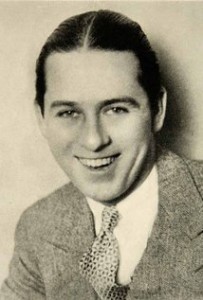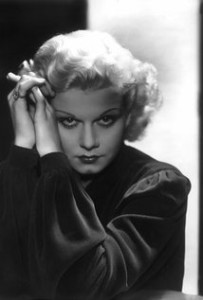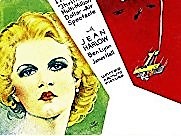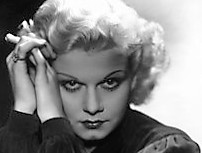Hell’s Angels **** (1930, Ben Lyon, James Hall, Jean Harlow) – Classic Movie Review 3863
Ben Lyon stars as cowardly Monte Rutledge with James Hall as his heroic brother Roy Rutledge, who are both studying at Oxford University as the film begins. The two dissimilar brothers promptly leave to sign on to join the British Royal Flying Corps as RAF airmen during World War One, in aircraft-obsessed producer/ co-director Howard Hughes’s vastly expensive and ambitious 1930 war action epic Hell’s Angels.
The film took three years to make from 1927 to 1930, and the obsessive Hughes spent a fortune on it. It cost $4 million, a staggering amount at the time, but it was an enormous success, attracting a crowd of 50,000 people at Grauman’s Chinese Theatre on Hollywood Boulevard. However, though it was the top-grossing film of 1930 and one of the highest grossing films of the early sound era, it still did not recoup its exorbitant cost.
The ill-matched main sibling duo Monte and Roy both sign on as partners to leave on a mission over Germany for a dangerous bombing attempt on a German munitions factory. Monte needs to show that he has true grit and guts after all, and it is Roy’s plan bravely and loyally to look after him.
Despite quality dialogue writing (by Joseph Moncure March) and inventive staging by (uncredited) director of dialogue James Whale, this deservedly famed and feted 1930 vintage movie is understandably a bit creaky. Rather the reaching the skies, its story stays earth-bound, thanks to the film’s rather slack pace and predictable plot.
But it is still a fascinating movie and an especially huge achievement in its amazing flying sequences, with its still extraordinary and impressive Oscar-nominated cinematography (Elmer Dyer takes the main credit here as the aerial photographer).
However, this came at a very high price. Hughes and pilot Harry Parry arranged many of the stunts for the dog-fighting scenes. When the main stunt pilot Paul Mantz told Hughes a stunt in the final scene was too dangerous, Hughes decided to pilot the plane himself, but then he crashed. He suffered a skull fracture and had facial surgery. During filming, three stunt pilots and a mechanic died in accidents.
The young Jean Harlow (just 19) catches the eye in an early role as Helen, the sexy young woman whom both brothers fancy, and it was a big boost for her career, turning her into an overnight sensation. Ray loves Helen, who has an affair with Monte; before they leave on their mission over Germany they find her in still another man’s arms.
Most of the footage is black and white, but the lovely two-strip Technicolor colour scenes and the one-colour tinted black and white images that were restored in the 1989 restoration print are a very considerable help to the enjoyment of this early talkie. The film’s expensive eight minute two-colour Technicolor scenes are the only colour footage of Harlow that exists. The tinted scenes for dramatic effect include a nighttime gun duel. There is part-screen full-colour for the flames consuming a German Zeppelin.
Shooting started as a silent film, so we have much cause to relish its sound movie status now. Originally being shot as a silent film, it was still unfinished after 18 months when The Jazz Singer premiered in 1927 and the sound era began. So Hughes converted his film to sound and dumped the original female lead, Norwegian-American Greta Nissen, because of her accent. It must have been a bitter pill for Greta Nissen to swallow that Harlow became a major star as her replacement.
Also in the cast are John Darrow, Lucien Prival, Frank Clarke, Roy Wilson, Douglas Gilmore, Jane Winton, Evelyn Hall, William B Davidson, Wyndham Standing, Lena Malena, Marian Marsh, Carl von Haartman, Ferdinand Schumann-Heink, Stephen Carr, Thomas Carr, J Granville-Davis, Hans Joby, Gertrude Sutton, Wilhelm von Brincken, Pat Somerset and Jack Deery.
The story is by Marshall Neilan and Joseph Moncure March, adaptation by Harry Behn and Howard Estabrook, with uncredited writing by James Whale.
Hell’s Angels is directed by Howard Hughes, Edmund Goulding and James Whale, runs 131 minutes, is produced by Caddo, is released by United Artists, is written by Harry Behn, Howard Estabrook, Joseph Moncure March and James Whale, from a story by Marshall Neilan and Joseph Moncure March, is shot in black and white and some colour by Tony Gaudio, Paul Perry, E Burton Steene, Elmer Dyer, Harry Zeck and Dewey Wrigley, produced by Howard Hughes, James Whale, Marshall Neilan and Luther Reed, is scored by Hugo Riesenfeld and designed by Carroll Clark.
© Derek Winnert 2016 Classic Movie Review 3863
Check out more reviews on: derekwinnert.com








